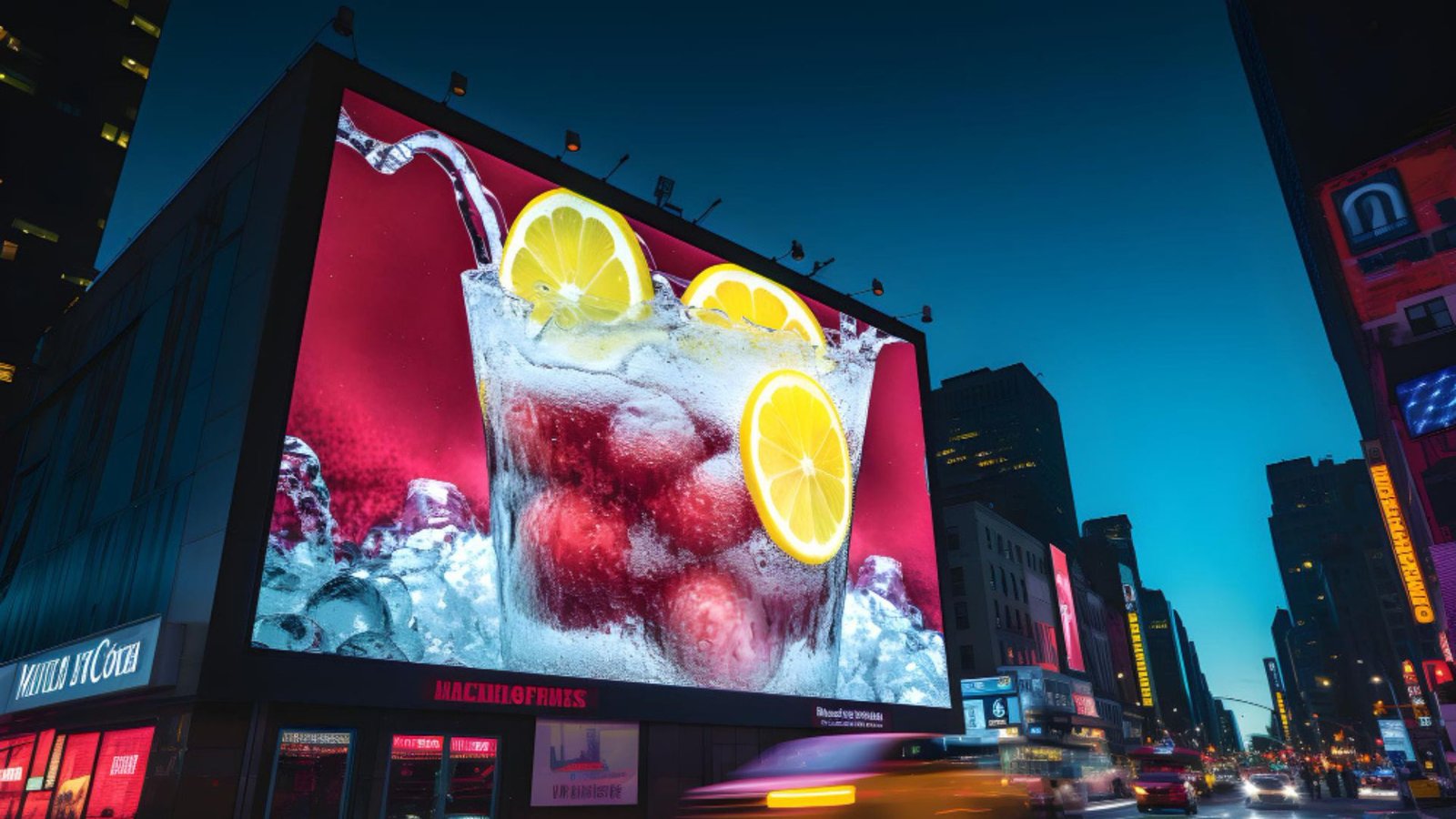Digital out-of-home (DOOH) advertising is rapidly transforming the landscape of marketing, enabling brands to engage with audiences in dynamic and impactful ways. As urban spaces become increasingly digital, businesses are leveraging this powerful medium to enhance their visibility, drive customer engagement, and ultimately, increase conversions. This blog will explore the power of digital out-of-home advertising, examining its benefits, effectiveness, and future trends, providing businesses with the insights needed to harness its potential.
1. Understanding Digital Out-of-Home Advertising
Digital out-of-home advertising refers to any digital advertisement that appears outside of the home environment. This includes billboards, transit advertising, digital signage in retail locations, and even screens in sports arenas. Unlike traditional out-of-home advertising, which relies on static images and limited messaging, DOOH allows for dynamic content that can be updated in real time. This flexibility enables marketers to tailor messages based on various factors, including time of day, weather, and audience demographics.
1.1 Evolution of DOOH Advertising
The evolution of digital out-of-home advertising has been fueled by advancements in technology, including the proliferation of digital displays and improvements in data analytics. Historically, outdoor advertising relied heavily on static images that required manual changes, limiting advertisers’ ability to react quickly to market conditions. However, with the rise of digital screens and programmatic buying, DOOH has become a highly targeted and measurable advertising channel.
2. Key Benefits of Digital Out-of-Home Advertising
Digital out-of-home advertising offers several benefits that set it apart from traditional advertising methods. Here are some of the most compelling advantages:
2.1 Enhanced Engagement
DOOH advertising captures attention in ways that static advertising cannot. Digital displays can feature eye-catching animations, videos, and interactive content that engage passersby. This enhanced engagement is critical in a world where consumers are constantly bombarded with messages from various sources.
2.2 Real-Time Content Updates
One of the significant advantages of DOOH is the ability to update content in real time. Advertisers can change their messages based on current events, promotions, or even audience behavior. For example, a restaurant can promote its lunch special during lunchtime and switch to dinner promotions in the evening. This flexibility allows businesses to remain relevant and responsive to consumer needs.
2.3 Targeted Advertising
Digital out-of-home advertising enables precise targeting based on location, time, and audience demographics. Using data analytics and audience measurement technologies, advertisers can deliver tailored messages to specific groups. For example, a sportswear brand might target fitness enthusiasts at a gym while promoting lifestyle products to shoppers in a nearby mall.
2.4 Increased Brand Visibility
DOOH advertising enhances brand visibility in high-traffic areas where consumers are most likely to notice them. Digital billboards, transit ads, and retail displays capture attention and reinforce brand messaging in a way that static advertisements may not. The dynamic nature of DOOH also contributes to increased brand recall and recognition.
2.5 Integration with Mobile Advertising
The synergy between DOOH and mobile advertising allows businesses to create cohesive marketing campaigns. Brands can use geolocation data to deliver personalized mobile ads to users when they are near DOOH displays. This integrated approach enhances customer engagement and drives conversions.
3. Effectiveness of Digital Out-of-Home Advertising
Digital out-of-home advertising has proven to be an effective marketing channel. Numerous studies highlight its impact on consumer behavior and purchasing decisions.
3.1 Increased Consumer Recall
Research indicates that DOOH advertising has higher recall rates compared to traditional advertising methods. A study by Nielsen found that digital billboards resulted in a 47% recall rate, significantly higher than static billboards. This increased recall translates into greater brand awareness and, ultimately, higher sales.
3.2 Boosting Online and Offline Sales
DOOH advertising not only drives foot traffic but also boosts online sales. According to a report by the Outdoor Advertising Association of America (OAAA), digital out-of-home ads increased online search activity for brands by 35%. This synergy between online and offline channels enhances overall marketing effectiveness.
3.3 Audience Engagement Metrics
With advancements in analytics and audience measurement technologies, businesses can track the effectiveness of their DOOH campaigns. Metrics such as impressions, engagement rates, and conversions provide valuable insights into campaign performance, enabling advertisers to optimize their strategies.
4. Strategies for Successful DOOH Campaigns
To leverage the full potential of digital out-of-home advertising, businesses should adopt effective strategies that maximize impact and ROI.
4.1 Location-Based Targeting
Choosing the right locations for DOOH advertising is crucial. Brands should analyze foot traffic patterns, demographics, and audience behavior to select high-traffic areas where their target audience frequents. By strategically placing ads in relevant locations, businesses can increase visibility and engagement.
4.2 Creative Content Development
The success of DOOH campaigns hinges on creative content that resonates with the audience. Advertisers should focus on producing visually appealing and compelling messages that capture attention quickly. Incorporating video, animations, and interactive elements can enhance engagement and drive action.
4.3 Data-Driven Decision Making
Data analytics is a vital component of successful DOOH advertising. Brands should leverage audience measurement tools to gather insights about viewership and engagement. This data can inform future campaign strategies, helping businesses optimize their messaging and targeting.
4.4 Multi-Channel Integration
Integrating DOOH advertising with other marketing channels enhances overall campaign effectiveness. Brands should coordinate their DOOH efforts with digital marketing, social media, and mobile advertising to create a cohesive brand experience. This multi-channel approach reinforces messaging and maximizes reach.
4.5 Continuous Optimization
Continuous optimization is essential for maximizing the impact of DOOH campaigns. Advertisers should regularly analyze performance metrics and adjust their strategies based on real-time data. This iterative approach allows businesses to refine their messaging and targeting to achieve better results.
5. Future Trends in Digital Out-of-Home Advertising
As technology continues to evolve, so does the landscape of digital out-of-home advertising. Here are some future trends to watch for:
5.1 Programmatic DOOH Advertising
The rise of programmatic advertising has begun to influence DOOH. Advertisers can use automated systems to purchase ad space in real time, optimizing their campaigns based on data insights. This trend simplifies the ad buying process and enhances targeting capabilities.
5.2 Enhanced Audience Measurement
Advancements in audience measurement technologies will allow advertisers to gain deeper insights into viewer behavior. This data can be used to refine targeting strategies and create more personalized advertising experiences.
5.3 Augmented Reality Integration
The integration of augmented reality (AR) with DOOH advertising is an exciting trend. AR technology allows consumers to interact with digital displays in innovative ways, enhancing engagement and creating memorable brand experiences.
5.4 Sustainable Advertising Practices
As businesses increasingly prioritize sustainability, DOOH advertising is likely to adopt more eco-friendly practices. This may include the use of energy-efficient displays, recycling programs, and promoting sustainability initiatives through advertising content.
5.5 Global Expansion of DOOH
The global expansion of digital out-of-home advertising will continue as more cities and countries invest in digital infrastructure. Emerging markets present significant opportunities for brands to tap into new audiences and drive growth through DOOH campaigns.
6. Conclusion
Digital out-of-home advertising has emerged as a powerful marketing tool, enabling brands to engage with consumers in innovative and impactful ways. With its enhanced engagement, real-time content updates, and targeted advertising capabilities, DOOH offers significant advantages over traditional advertising methods. As technology continues to evolve, the effectiveness and reach of digital out-of-home advertising will only grow.
By understanding the power of DOOH and implementing effective strategies, businesses can harness this dynamic medium to enhance brand visibility, drive customer engagement, and ultimately, achieve their marketing goals. As the advertising landscape continues to evolve, embracing digital out-of-home advertising is essential for brands looking to stay ahead in a competitive marketplace.





